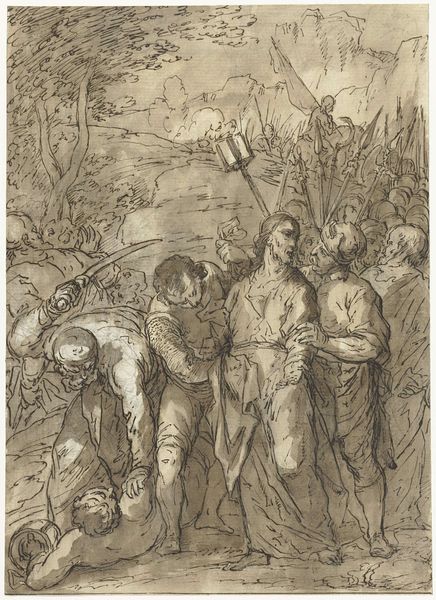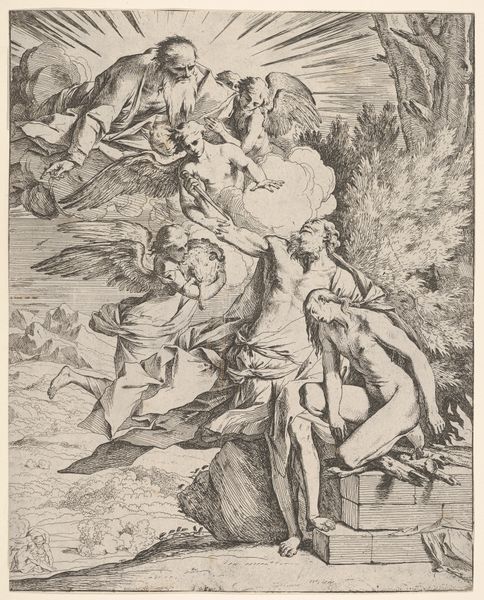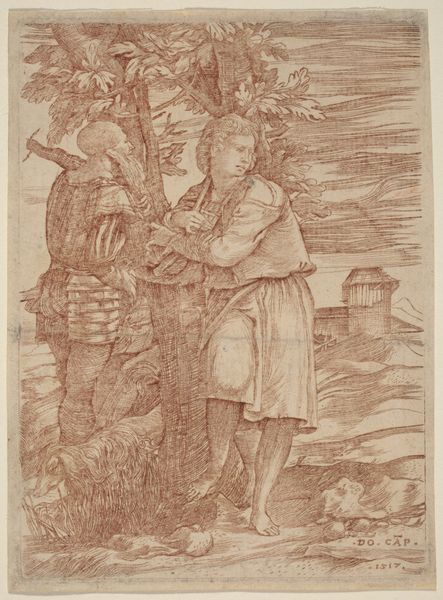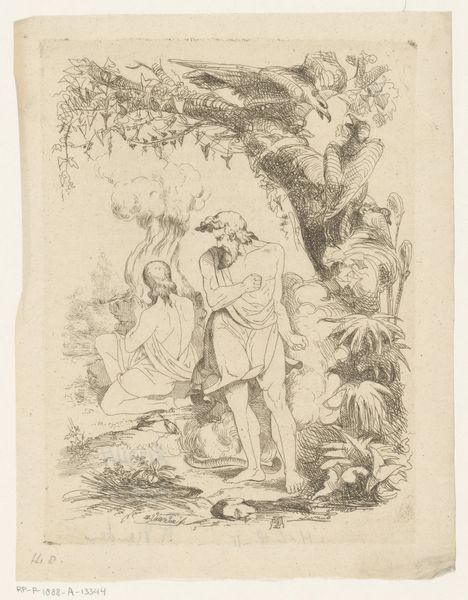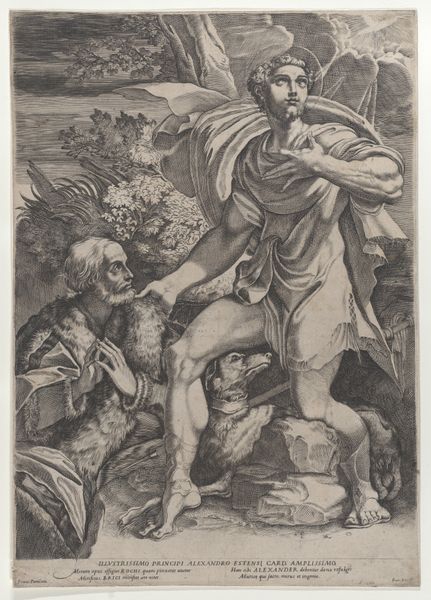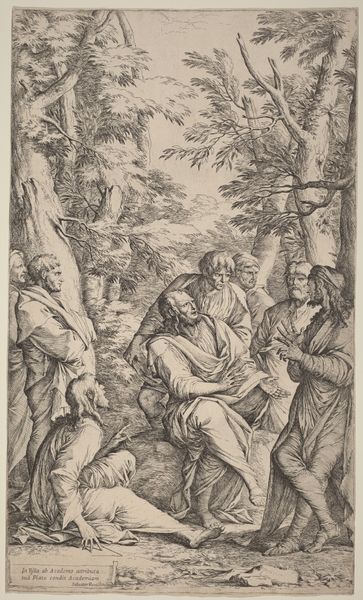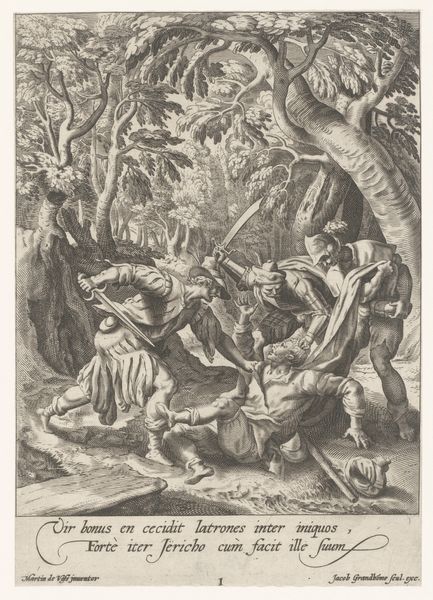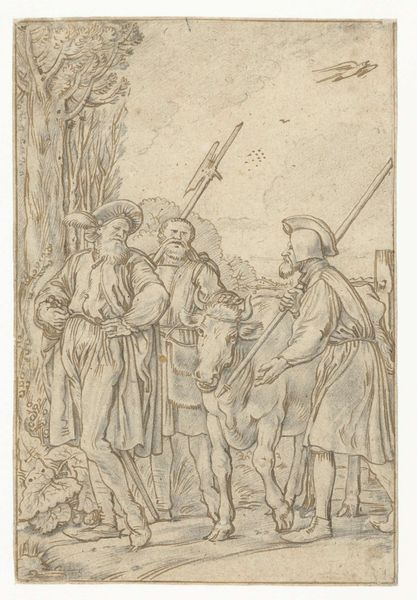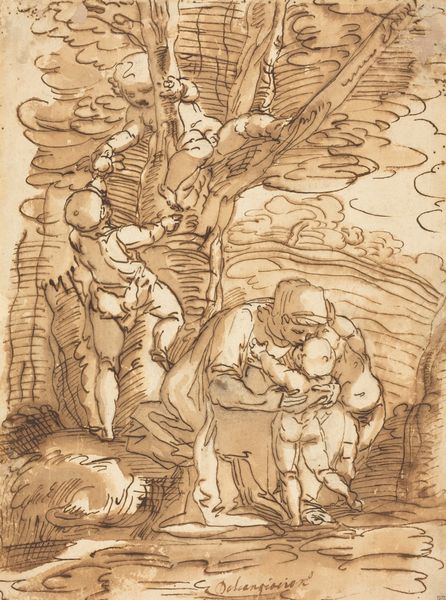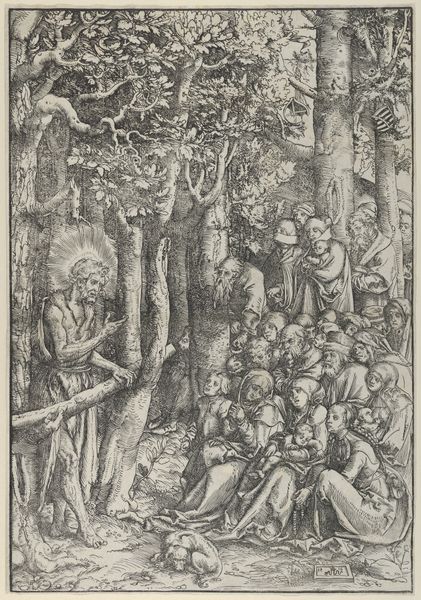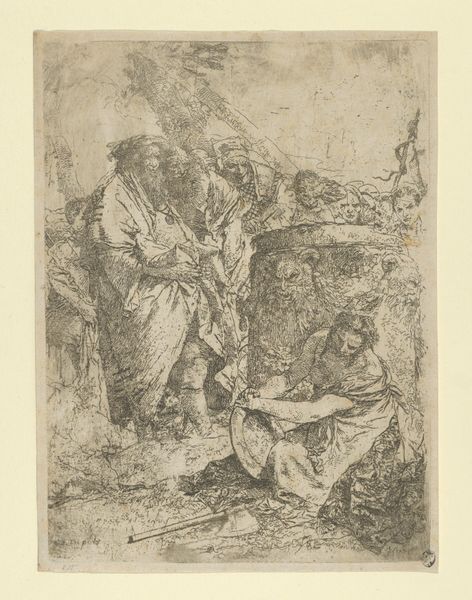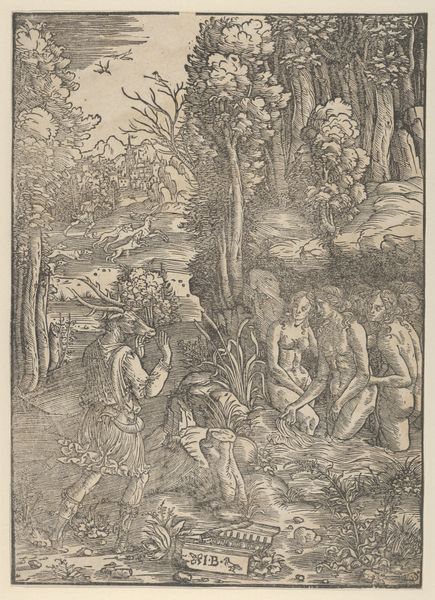
drawing, print, intaglio, ink
#
portrait
#
drawing
#
ink drawing
#
pen drawing
# print
#
intaglio
#
figuration
#
ink
#
line
#
italian-renaissance
Dimensions: sheet: 14.1 x 11.1 cm (5 9/16 x 4 3/8 in.)
Copyright: National Gallery of Art: CC0 1.0
Curator: Let’s turn our attention to Domenico Campagnola’s "The Virgin and Child with Saints," a 1517 ink intaglio print. Editor: It's stunning. The density of line work creates such a vibrant scene, though the expressions are quite somber. Almost melancholic. Curator: Campagnola was deeply interested in the printing process. What is so fascinating here is how he employs etching to mimic the freedom and tonal range we see in drawings, rather than a conventional engraving. We see how the labor involved in creating an engraving by hand is replicated here. Editor: And placing the holy figures within an earthly landscape certainly humanizes them. The bare feet, the simple robes…It makes me wonder about Campagnola’s intended audience and what this accessibility might have represented for them in the context of religious art at the time. Also, it really strikes me, seeing women represented with power—the staffs, for instance. I find it curious that two male figures appear on the periphery, literally looking at an open book—perhaps symbolic for something? Curator: The choice of intaglio offers the potential for wide distribution and the dissemination of imagery. Think of it like this: compared to the labor needed for frescoes or painted altarpieces, printmaking democratizes devotional imagery to a wider public audience. It becomes a commodity, albeit one laden with meaning. Editor: Absolutely, and seeing women not merely as passive objects of veneration but as figures of strength and perhaps wisdom is deeply moving. That tension between accessible representation versus who benefits from this democratization. Is this a true reflection of contemporary lives, or an artistic reimagining? These prints gave rise to an entire industry, one of replication, imitation and trade—was the artist aware of how far these images could travel, who might acquire them and what status symbols could they afford the wealthy? Curator: The printing is really amazing! A study on the accessibility and commercial distribution of devotional art at that moment. How an object changes its meaning, based on access and class is pretty telling. Editor: Well, this definitely gives me something to think about. Considering whose stories are told—and not told—within even sacred narratives is always relevant.
Comments
No comments
Be the first to comment and join the conversation on the ultimate creative platform.
